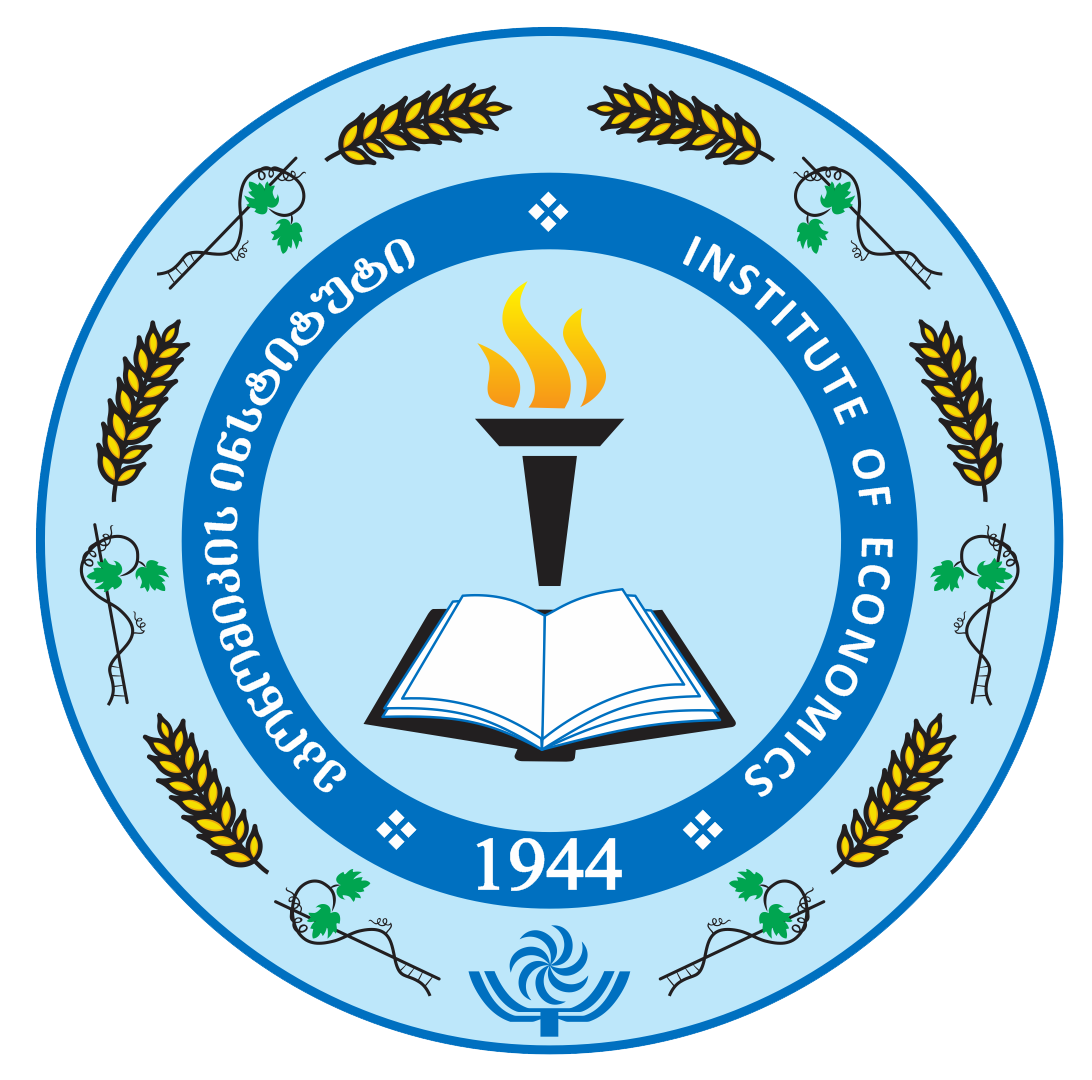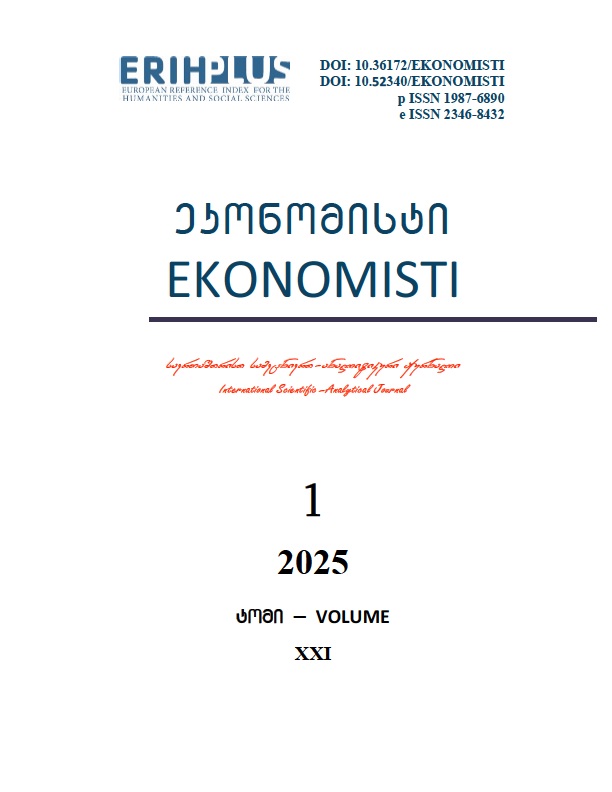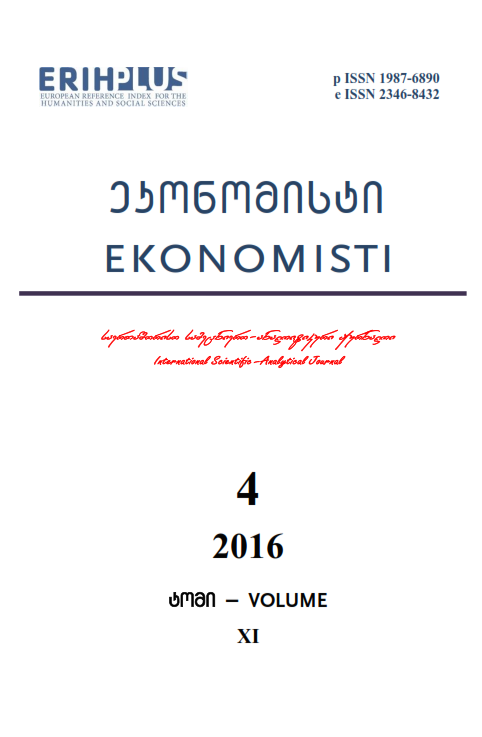
The international scientific and analytical, reviewed, printing and electronic journal of Paata Gugushvili Institute of Economics of Ivane Javakhishvili Tbilisi State University

LEGAL, ORGANIZATIONAL AND METHODOLOGICAL ISSUES OF INTANGIBLE ASSETS AND INTELLECTUAL PROPERTY OBJECTS IN GEORGIA
Expanded Summary
In terms of modern globalization and Euro-integration, for the economic growth and development of the country is important to activate business, entrepreneurial activity, increase competitiveness of companies and ensure their financial sustainability and long term stability. The latter is directly dependent on the composition and structure of the enterprise assets, where a substantial share belongs to intangible assets and intellectual property objects and their rights. Determining the effectiveness of the economic benefits, which are adequate to the use of these assets (property), are required to evaluate their real market value, which is also mandatory for the country's current legislation, namely, the international standards of assessment (IVS 2017) and the International Financial Reporting Standards (IFRS-2017). It is obvious that there are very serious tasks in the management of modern companies regarding general assets and intangible assets, including periodic assessment of intellectual property objects. It should also be taken into consideration that the efficiency and quality of the assessment process are essentially dependent on the adequate normative-legislative basis, the relevant methodological basis and the availability of comprehensive information on the market condition of these assets. In accordance with the International Standards of Assessment, in many cases, the objective assessment is the goodwill and the categories of intangible assets such as: Related to marketing; Related to customer; Related to art; Related to agreements; Related to technologies. As for the intellectual property objects as part of the united property complex, their assessment is made according to the standard classification scheme used by the World Intellectual Property Organization (WIPO) and Independent Appraisers. Selection of the methods and value used in assessing non-material assets is directly dependent on the purpose of assessment. Consequently, an evaluator should evaluate intangible assets, intellectual property objects, and carry out their expertise, etermine the terms of the economic and juridical service and operativelly obtain the following necessary information: Intangible assets, name of the intellectual property objects and full description; Property certificates (patents, licenses, trademarks, etc.); License agreement on usage of license; product production plan with using intangible assets, intellectual property objects (Product nomenclature, price, prime cost, release volume for the latest 5 years according to the species and period); Current expected revenue forecast and planned expenditures, tax expenses and more; Agreement on the performance of the works on which the intangible assets are created; expenses necessary for the implementation of scientific-research and experimental projects; copyright royalty, about the remuneration; about preparation of production and implementation of expenses; about Advertising and marketing surveys; For the assessment date, about actual effect of intangible assets and intellectual property objects, useful service periods; About amortization period, residual carrying value. By assessing these factors, the organization of the evaluation activities shall be carried out in the following sequence:
1. In accordance with the general standards, in particular, according to the MIA 101 "work scale" the assessor is obliged to describe the basic conditions of the evaluation assignment.
2. In order to ensure compliance of the assessment with International Standards of Assessment, the assessor must conduct the examination and obtain relevant evidence, so that he/she have an accurate guarantee that the assessment process will be carried out in accordance with the purpose and value of the assessment and the assessment report will be comprehensive, reliable, objective, in compliance with all requirements of the standard. That is why it is particularly important proper selection of the basic values. It should be fully consistent with the terms and conditions of the Assessment Order, as well as all requirements related to it.
3. An assessor must consider the prerequisite of the assessment, or the alleged use of the asset, in order to analyze: a) the best and most effective use; b)current/existing use. As a result of the analysis, he/she has to make a clear conclusion of the assessment of which option is to use the asset to be more efficient, because this is the factor in calculating the size of the decisive market value.
4. As the next step, the assessor selects the method/methods of evaluation and uses the appropriate information in the selection of the selected option.
5. Calculation of market value and compounding of results are carried out by using the method/methods selected by the assessor.
6. The final stage is to prepare and submit an assessment report in accordance with the requirements defined by the International Standards of Assessment.
Experience and practice of developed countries show that in the process of assessment of intangible assets and intellectual property objects, the method of income is most commonly applied to such objects as: Technology; Trade names; Trademarks; Digital signage; Activity licenses; Contracts on competition restrictions and more. Five main approaches are used in the assessment process of the income approach: Surplus income method Release method from royalties; Additional profit method; Zero method Distributor method.
The intangible asset assessment is based on the concept of mutual trust between the risks of liquidity of the assets and its revenue. International experience is practically justified that the risk of investing in investments in intangible assets exceeds the risks associated with investments in the material and financial assets. Modern companies periodically analyze the structure of their assets and assess the participation of each group in terms of income and profit. Therefore, in assessing intangible assets, it is important to note that the company's assets distinguish not only the level of participation in the industry and quality of functioning but also the income potential (the level of requested income).

